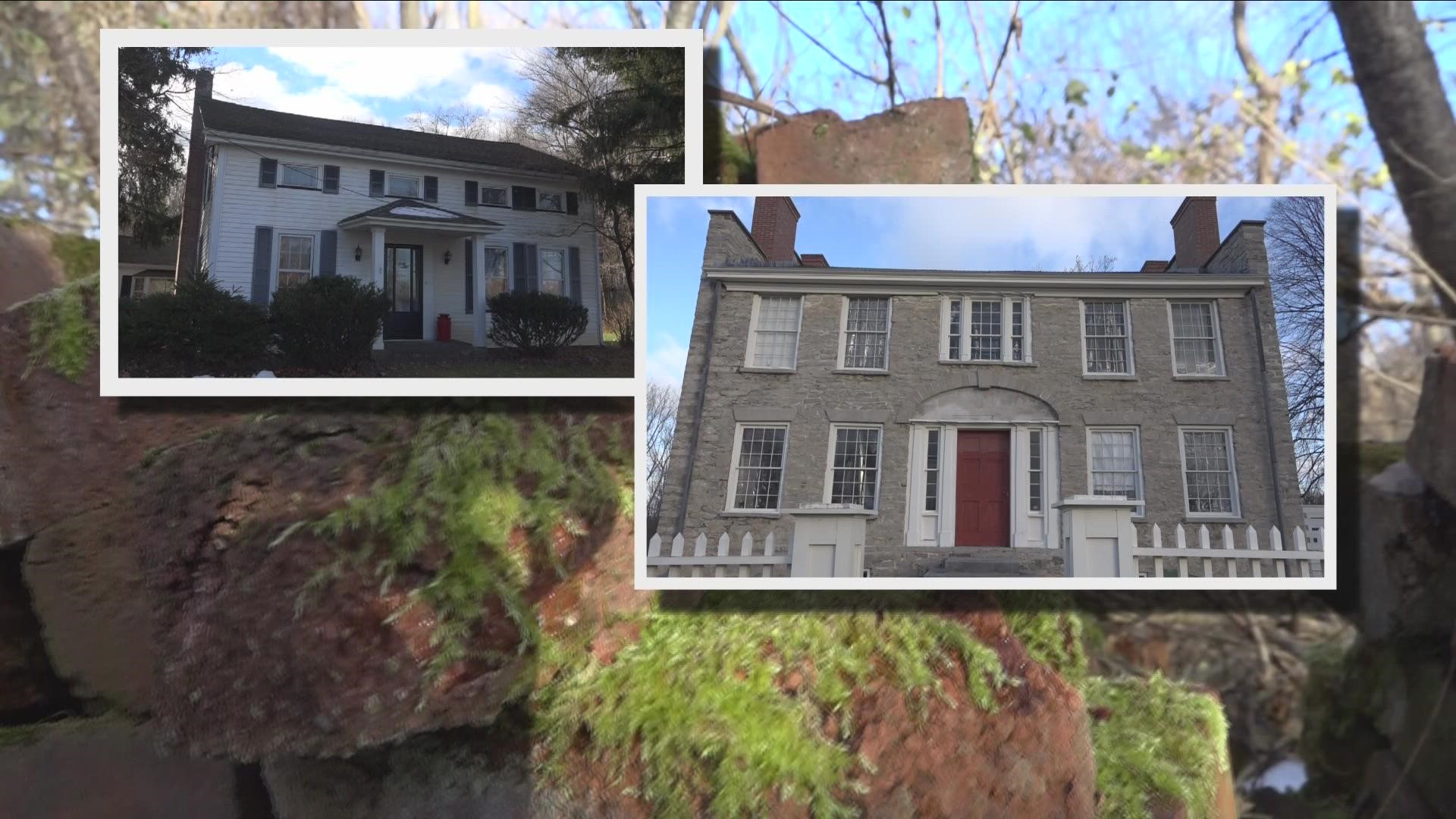LANCASTER, N.Y. — We say it all the time, history is all around us, and that certainly is the case with a pair of homes in Lancaster.
Sitting across Genesee Street from each other, they predate just about all of Western New York. They also have a mutual history that includes a family that fought in the American Revolution and is said to have been involved in the Underground Railroad.
For Bob Machnica it is both family and Western New York history. It is the home where his wife grew up. A house that dates back to 1817. But some of the most intriguing histories surround the barn rather than the house. The barn was destroyed by the Blizzard of '77, but the stories that have been passed down in the family have survived.
"The far, northeast corner of the barn was a secret room on the first floor. It was battenboard and they had a battenboard wall that was on hinges."
Machnica says that according to family lore, that secret room was used to hide freedom seekers. It is an idea only emboldened by the home's connection to a landmark down the street.
The Hull Family Home and Farmstead is the oldest surviving dwelling in Erie County (It was known as Niagara County when it was built). The home was built in 1810 by Warren Hull, who traveled west from New England with his father to fight in the Revolutionary War. Hull House Foundation President Gary Costello says that is when they had a brush with greatness. "They traveled from Stockbridge, MA westward, over to Fort West Point where they met up with none other than General George Washington."
After the war, Warren married and he, his wife Polly, and their children continued their westward move, across the state, ultimately landing here on the Niagara frontier. They bought a plot from the Holland Land Company and Joseph Ellicott. It was the only home for a few years until William Conley moved in and built his house (The current Machnica property). Conley married Vilera Hull, then after she passed away, her sister Miranda Hull. Costello says
"We do know one of the hull daughters lived over there and we do know there was Underground Railroad activity, at least associated with this family."
It was a family that totaled 12 children. Another daughter, Sophia, and her husband Eber Howe, a newspaperman, appear to have been very active in the abolition movement, ultimately settling in Painesville, OH. According to Hull House Foundation Trustee, and history teacher Sarah Foels, "it appears in about 1820 he starts his own newspaper called the Painesville Gazette, it is here he starts writing about anti-slavery views. In Painesville they still have their home and they have a whole hollow named after them, Liberty Hollow, for the place they established a mill, and had the slaves stay there before they were put on a steamer and taken out to Lake Erie."
Here at the other end of Lake Erie, in two homes that saw Western New York grow around them, the history of people helping people to freedom, lives on in stories passed down through the generations.

